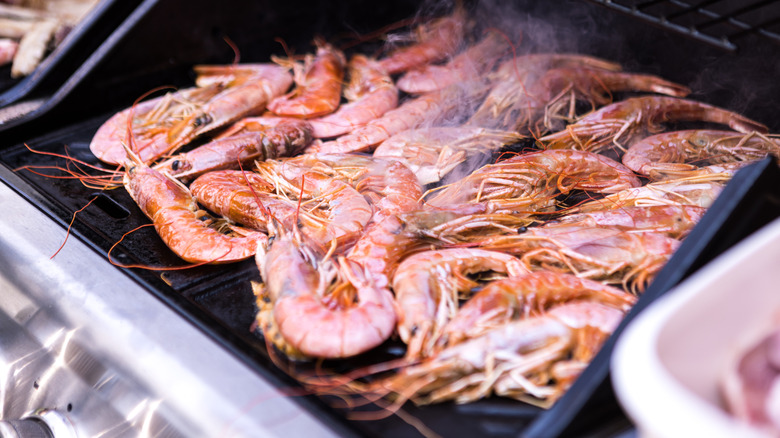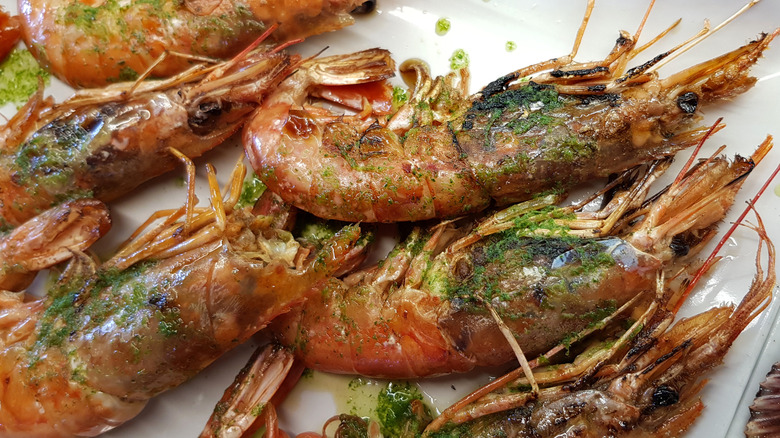When To Leave The Heads On Your Shrimp While Grilling
If you buy shrimp at the grocery store, you may have a wide variety of options available, including cooked, raw, peeled, and shell-on. Shell-on shrimp may be a hassle to deal with, but they're usually a better buy. In some cases, though, they might come complete with their heads on. Should you cook the shrimp with the heads intact? Well, that's a matter of personal preference, but Stephen Mandracchia, who works as the Director of Culinary Operations at the New York City campus of the Institute of Culinary Education, approves of the practice.
Mandracchia told The Takeout, "I prefer grilling shrimp head-on as both the fat within the head and shell contribute to greater flavor." He went on to say, "The shrimp head is generally not considered edible (there are some pointy parts!), but there is lots of flavor inside if you're willing to work for it." He's not the only one who feels that way, since eating shrimp heads is becoming more popular these days. The reasons for this range from an interest in nose-to-tail eating to the fact that contemporary eaters are more adventurous in general. Not to mention, shrimp heads, as opposed to the bodies, may have a more complex and even bitter flavor, but it's one many people find enjoyable. If you want to try shrimp heads for yourself, you'll need to grill your shrimp intact. If, on the other hand, you can't stand the thought of those beady black eyes staring at you reproachfully as they cook, you might want to chop the heads off.
There is one drawback to heads-on grilling, but you can take precautions to avoid this
Stephen Mandracchia admitted that there is one issue with cooking shrimp with their heads intact. "Most of the fat in the shrimp is located in the head, so cooking them head-on can lead to a softer or mushy texture," he said. There's also some softening due to the fact that shrimp heads secrete an enzyme that can break down the body once the shrimp dies. Even so, this need not be an insurmountable problem. Mandracchia's recommendation is to dry brine the shrimp for 20 minutes or so using a teaspoon of kosher salt mixed with ¼ teaspoon of baking soda for each pound. According to him, "This will give the shrimp a firm and snappy texture."
Mandracchia also offered a few more tips for cooking whole shrimp. One is to purchase the largest size of head-on shrimp available. As he explained, "The larger the protein, the greater amount of heat they can handle, and it will take longer to dry out." He also recommends splitting the tails and basting these with melted butter or olive oil as the shrimp are grilling to provide added moisture and flavor.

